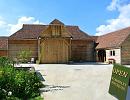Contact Seller
Webberley Antiques
Tel01424 838557Please quote Antiques Atlas.


 Antique Burr Walnut Leather Top Desk
Antique Burr Walnut Leather Top Desk
 Antique Queen Anne Style Walnut Writing Bureau
Antique Queen Anne Style Walnut Writing Bureau
 George II Period Mahogany Architect’s Reading Trip
George II Period Mahogany Architect’s Reading Trip
 Queen Anne Style Bureau
Queen Anne Style Bureau
 Victorian Bonheur De Jour
Victorian Bonheur De Jour
 Antique Victorian Quality Satinwood French Bureau
Antique Victorian Quality Satinwood French Bureau
 Victorian Mahogany Ladies Writing Desk
Victorian Mahogany Ladies Writing Desk
 Quality Antique Inlaid Mahogany Freestanding Desk
Quality Antique Inlaid Mahogany Freestanding Desk
 20th century Napoleon III style writing desk
20th century Napoleon III style writing desk
 Antique Architect's Desk, English, Adjustable
Antique Architect's Desk, English, Adjustable
 Antique George III Quality Walnut Kneehole Desk
Antique George III Quality Walnut Kneehole Desk
 Lovely Mahogany Writing Desk
Lovely Mahogany Writing Desk
Non UK callers :
+44 1424 838557
Hungarian Ash Desk Attributed To Howard & Sons


Displaying all of the high quality detailing and exemplary cabinet work for which Howard & Sons was internationally recognised, this beautiful and finest quality desk was almost certainly made by Howard & Sons of Berners Street in around 1875. A London cabinet maker, alongside Gillows, Howard & Sons was amongst a handful of pre-eminent British cabinet makers which used Hungarian Ash in their work.
The timber was expensive and considered so beautiful and rare that it was used in Gillows and Howard exhibition pieces, including pieces on display at the Great Exhibition of 1851 at Crystal Palace. These companies did not stamp all of their work and the desk does not appear to be stamped, but it may be.
With Hobbs & Co., lock (again which feature on both Howard and Gillows cabinets).
The desk has a breakfront outline with two fielded panel doors flanked by slender ring turned pillars with acanthus carved capitals. The ash has a dark vibrant swirling grain against a beautiful golden colour with shimmering ripples similar to satinwood or maple. The top border has been outlined in walnut and there are dark walnut inlays of Arts and Crafts form – a medieval French cross and splayed seed heads - and solid walnut arched and applied mouldings to the doors.
The top with thick taupe coloured leather skiver in three parts, each with a gold tooled border and the leather is without damage or significant wear and marks. The drawers are beautifully made, each lined in solid mahogany with particularly tiny hand cut dovetails.
The left hand cupboard door opens to reveal three graduated drawers with original flush brass handles. The right hand cupboard door opens to reveal two solid ash shelves. There are some minor marks and small dents. An old, short and very fine repaired crack to the top on one corner and small scuffs to the inner face of the left hand door which encloses the three drawers (just where the drawers have not been pushed back fully and the door has been closed against them), a fine crack is present only to the inner face of this door. The doors and all drawers open and close smoothly and the desk is set on its original small casters.
In a very good condition for age consistent with careful use and with a lovely consistent colour throughout, the desk has come from a private Surrey home and has been well looked after.
The quality of the cabinet work, attention to detail, proportion and the striking figuring of the ash is an absolute joy.
This is very fine piece of antique furniture, of exhibition quality and a most attractive, usable and compact desk.
Dimensions are:
50.5 inches wide, 23.5 inches deep and 30 inches high.
The kneehole is 15 inches wide and 24 inches floor to underside of the drawer.
For metric please multiply by 2.5 I describe and photograph my pieces accurately and with the aim that on arrival each will exceed expectations.
I operate a full refund guarantee and am always happy to give free, honest and friendly advice.
SellerWebberley Antiques
View all stock from
Webberley Antiques

 The Barn
The Barn
Battle Road
Dallington
East Sussex
TN21 9LQ
Tel : 01424 838557
Non UK callers : +44 1424 838557
Get directions to Webberley Antiques
The timber was expensive and considered so beautiful and rare that it was used in Gillows and Howard exhibition pieces, including pieces on display at the Great Exhibition of 1851 at Crystal Palace. These companies did not stamp all of their work and the desk does not appear to be stamped, but it may be.
With Hobbs & Co., lock (again which feature on both Howard and Gillows cabinets).
The desk has a breakfront outline with two fielded panel doors flanked by slender ring turned pillars with acanthus carved capitals. The ash has a dark vibrant swirling grain against a beautiful golden colour with shimmering ripples similar to satinwood or maple. The top border has been outlined in walnut and there are dark walnut inlays of Arts and Crafts form – a medieval French cross and splayed seed heads - and solid walnut arched and applied mouldings to the doors.
The top with thick taupe coloured leather skiver in three parts, each with a gold tooled border and the leather is without damage or significant wear and marks. The drawers are beautifully made, each lined in solid mahogany with particularly tiny hand cut dovetails.
The left hand cupboard door opens to reveal three graduated drawers with original flush brass handles. The right hand cupboard door opens to reveal two solid ash shelves. There are some minor marks and small dents. An old, short and very fine repaired crack to the top on one corner and small scuffs to the inner face of the left hand door which encloses the three drawers (just where the drawers have not been pushed back fully and the door has been closed against them), a fine crack is present only to the inner face of this door. The doors and all drawers open and close smoothly and the desk is set on its original small casters.
In a very good condition for age consistent with careful use and with a lovely consistent colour throughout, the desk has come from a private Surrey home and has been well looked after.
The quality of the cabinet work, attention to detail, proportion and the striking figuring of the ash is an absolute joy.
This is very fine piece of antique furniture, of exhibition quality and a most attractive, usable and compact desk.
Dimensions are:
50.5 inches wide, 23.5 inches deep and 30 inches high.
The kneehole is 15 inches wide and 24 inches floor to underside of the drawer.
For metric please multiply by 2.5 I describe and photograph my pieces accurately and with the aim that on arrival each will exceed expectations.
I operate a full refund guarantee and am always happy to give free, honest and friendly advice.
Price The price has been listed in British Pounds.
Conversion rates as of 9/MAY/2024. Euro & Dollar prices will vary and should only be used as a guide.
Always confirm final price with dealer.
Date c.1875
Mid Victorian Antiques Material Ash
Origin Hungarian
Item code as216a1981
Status Sold
£1600.00 
$2001.92 
€1857.76 

$

€

Conversion rates as of 9/MAY/2024. Euro & Dollar prices will vary and should only be used as a guide.
Always confirm final price with dealer.
View all stock from
Webberley Antiques

 The Barn
The BarnBattle Road
Dallington
East Sussex
TN21 9LQ
Tel : 01424 838557
Non UK callers : +44 1424 838557
Get directions to Webberley Antiques
You may also be interested in
 Antique Burr Walnut Leather Top Desk
Antique Burr Walnut Leather Top Desk
 Antique Queen Anne Style Walnut Writing Bureau
Antique Queen Anne Style Walnut Writing Bureau
 George II Period Mahogany Architect’s Reading Trip
George II Period Mahogany Architect’s Reading Trip
 Queen Anne Style Bureau
Queen Anne Style Bureau
 Victorian Bonheur De Jour
Victorian Bonheur De Jour
 Antique Victorian Quality Satinwood French Bureau
Antique Victorian Quality Satinwood French Bureau
 Victorian Mahogany Ladies Writing Desk
Victorian Mahogany Ladies Writing Desk
 Quality Antique Inlaid Mahogany Freestanding Desk
Quality Antique Inlaid Mahogany Freestanding Desk
 20th century Napoleon III style writing desk
20th century Napoleon III style writing desk
 Antique Architect's Desk, English, Adjustable
Antique Architect's Desk, English, Adjustable
 Antique George III Quality Walnut Kneehole Desk
Antique George III Quality Walnut Kneehole Desk
 Lovely Mahogany Writing Desk
Lovely Mahogany Writing Desk







